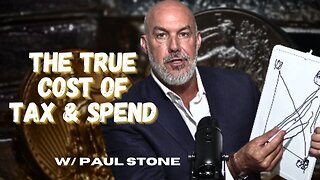Interesting facts about the Vietnam war
The Vietnam War, also known as the Second Indochina War, was one of the most pivotal and controversial events in modern history. Lasting from 1955 to 1975, it was a war between North Vietnam and South Vietnam, with the involvement of the United States and its allies. This conflict not only shaped the political and economic landscape of Vietnam, but also had a significant impact on the global community. In this video, we will explore some of the most interesting and lesser-known facts about the Vietnam War.
1. The Domino Theory: One of the main reasons for US involvement in the Vietnam War was the fear of communism spreading throughout Southeast Asia. The Domino Theory, which was based on the belief that if one country fell to communism, then its neighboring countries would follow suit, was a major factor in shaping US foreign policy during this time. This theory was ultimately proven wrong as Vietnam remained a communist country while its neighbors did not.
2. The Gulf of Tonkin Incident: The United States' direct involvement in the Vietnam War began with the Gulf of Tonkin Incident in 1964. The US claimed that North Vietnamese boats had attacked American destroyers in the Gulf of Tonkin, justifying an increase in military support. However, it was later revealed that the incident was falsely reported and exaggerated, leading to increased criticism of the US government's role in the Vietnam War.
3. The Vietnam War was Technologically Advanced: The Vietnam War was the first major conflict to be broadcast on television and it was also the first time that the US used extensive technology in warfare. From sophisticated weaponry such as napalm bombs and agent orange, to the use of helicopters for transport and attack purposes, the Vietnam War was a turning point in modern warfare tactics.
4. The Role of Women in the War: While the Vietnam War is often seen as a male-dominated conflict, the role of women should not be overlooked. Over 11,000 American women served in Vietnam, with many working as nurses, some of whom were stationed directly in combat zones. These women played a vital role in providing medical care and support for injured soldiers on both sides.
5. The Secret Bombing of Cambodia: The US secretly bombed Cambodia between 1969 and 1973, despite not officially being at war with the country. This bombing campaign resulted in the deaths of thousands of Cambodians and destabilized the country, leading to the rise of the Khmer Rouge regime and the notorious genocide in the 1970s.
6. The Anti-War Movement: The Vietnam War sparked widespread anti-war protests both in the US and around the world. People from different walks of life and political ideologies came together to voice their opposition to the war, which was seen as unjust and unnecessary. These protests played a significant role in shaping public opinion and ultimately helped bring an end to the war.
7. The Effects of Agent Orange: The US military used the chemical defoliant known as Agent Orange to destroy vegetation and expose enemy troops during the Vietnam War. However, this chemical had devastating effects on the environment and the health of both soldiers and civilians. It is estimated that over 400,000 people were killed or injured as a result of exposure to Agent Orange, and its effects are still being felt today with birth defects and other health issues in the affected areas.
8. The Role of the Media: The Vietnam War was the first war to be heavily covered by the media. With the rise of television and other forms of media, people were exposed to the harsh realities of war like never before. The graphic images and coverage of the war had a strong impact on public opinion and contributed to the anti-war sentiment that eventually led to the withdrawal of US troops.
9. The Tet Offensive: In 1968, the North Vietnamese and Viet Cong launched a surprise attack during the Vietnamese holiday of Tet. This simultaneous assault on major cities and military bases caught the US and South Vietnamese forces off guard and resulted in heavy casualties on both sides. Although it was a military defeat for the Viet Cong, the Tet Offensive had a significant psychological impact and is considered a turning point in the war.
10. The Fall of Saigon: On April 30, 1975, the North Vietnamese troops captured Saigon, the capital of South Vietnam, resulting in the unification of the country under communist rule. This marked the end of the Vietnam War and the US' involvement in the conflict. The Fall of Saigon is a symbol of defeat for the US and a major victory for North Vietnam.
In conclusion, the Vietnam War was a complex and multifaceted conflict, with various political, social, and environmental factors at play. It left a lasting impact on all those involved and changed the course of history in many ways. By exploring these lesser-known facts, we can gain a deeper understanding of this important moment in history and its significance in shaping the world we live in today.
-
 LIVE
LIVE
Benny Johnson
2 hours agoSecret Service Director GRILLED LIVE Now Over Trump Assassination Attempt | ‘COVER UP?’| Biden QUITS
19,579 watching -
 LIVE
LIVE
Right Side Broadcasting Network
4 days agoLIVE: Oversight of the U.S. Secret Service and the Attempted Assassination of Donald Trump - 7/22/24
24,758 watching -
 LIVE
LIVE
Caleb Hammer
12 hours agoDisgusting Degenerate Steals $200,000 From Mom | Financial Audit
332 watching -
 1:22:05
1:22:05
Graham Allen
4 hours agoBIDEN DROPS OUT!!! KAMALA IS IN?! NOT SO FAST!!! + YOU WERE LIED TO THE WHOLE TIME!!!
73.2K122 -
 LIVE
LIVE
Matt Kohrs
15 hours agoSecret Service Director Deposed After Trump Attack || The MK Show
2,033 watching -
 26:52
26:52
ArcaneBear
2 hours agoBitcoin & Solana Explodes! On Route to $72k and Beyond?
24.4K1 -
 LIVE
LIVE
Guns & Gadgets 2nd Amendment News
1 day agoLIVE: Secret Service Director To Testify Before Congress
1,524 watching -
 1:27:47
1:27:47
jeffahern
3 hours agoMonday Madness with Jeff Ahern! (Biden Bails)
37.8K9 -
 31:23
31:23
Rethinking the Dollar
14 hours agoBiden isn't the Party! It's Washington's & Wall Street Policies That Harm American Workers
38.6K22 -
 2:47:53
2:47:53
Pardon My Take
22 hours agoCoach Duggs Guarentees A Playoff Berth In His Second Season As OC
66.4K9